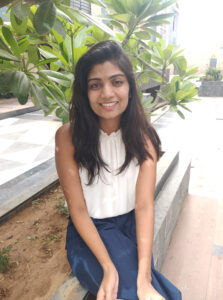Firm/Studio Name
Project 1505

How did you come up with the name of your studio?
1505 has been a significant set of digits for me being my birth date and hence has a familiar warmth to it. That’s how it became a part of my first venture.
What determined your passion for design? Tell us about the moment when you decided this is the way to go.
About 12 years ago, we were getting our house designed by a local architect and seeing the proposed design, I started wondering how fulfilling and exciting it must be for him to plan where and how should we live forever. That’s when I decided I want to pursue architecture too. The idea of using design as a communication tool to solve problems in people’s lives was fascinating.
Funnily enough, my parents were so intrigued with my career choice that they put the project on hold until I graduated and just last year, I finally ended up designing our home. The sheer joy of putting things from pen and paper to habitable spaces is beyond expression.
What kind of projects were you doing when you first started as a designer?
During my first professional practice, I got a chance to work on multiple residential interior projects for over a period of three years which is when I found my niché.
The first step for my individual practice was developing an office space for a travel agency. Since then I’ve been consciously looking for projects that challenge me to push my limits further.
What field of design are you most interested in?
Designing requirement specific spaces, understanding client’s struggles with their current space and providing them with solutions tend to satisfy and intrigue me the most.
Having said that, designing public spaces has its own charm; you can design for experiences that you want people to have and emotions that you want them to feel and just leave it open to interpretation.
What is your favourite book/magazine on design? How about your favourite site?
A book that I always keep going back to is “Architecture Depends” by Jeremy Tills. The simple message that I have taken from the book for my practice is, being dependant is not a weakness, it only serves you with better opportunities. Listen, interpret and collaborate.
I do flip through Architectural Digest, Elle, Domus etc to keep up with the latest design trends and material choices.
What is your Signature Style?
I tend not to label my outcomes as a signature style just yet. My choices are conscious and the idea is to push my limits and not play in a defined sandbox.
What inspires you to thrive in this industry? Which piece of architecture inspires you the most.
This industry is one that fuels both my professional desires: to be creative and a team leader. Having my own practice not just challenges me as a designer but also as an entrepreneur, a mentor and a mediator who brings together multiple disciplines with different expertise to serve each client efficiently.
From your point of view, is design an art or a science?
Permission to call it scientific art? Architecture especially is backed up with scientific reasonings, equations and algorithms that help build and sustain the form and function of any space.
If you had no limits (money, resources), what would you create?
If I got that opportunity, I would want to bring my architecture thesis to life. It was an intervention for migrant students in the city of Mumbai, creating spaces in-between spaces for them to ‘hangout’ with purpose.
What advice do you have for young designers or architects reading this interview?
Having just started off me I’d like to pass advice that has always spoken to me. Don’t settle for whatever comes your way. When you pick projects and opportunities aligned to your vision, your work tends to speak for itself which is always rewarding for both the client and yourself. And that’s the idea.







